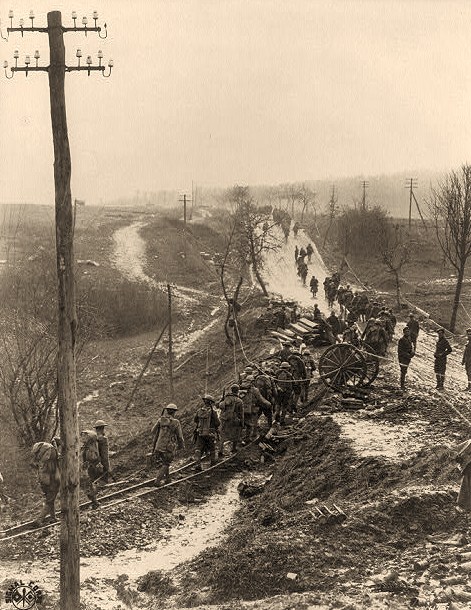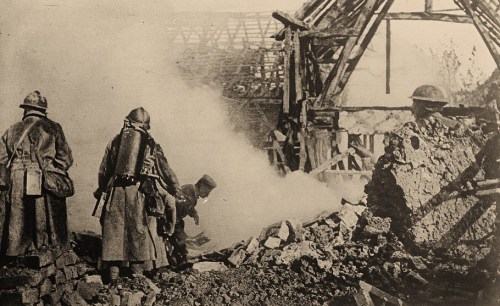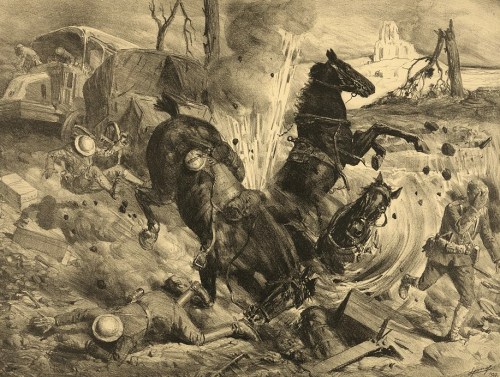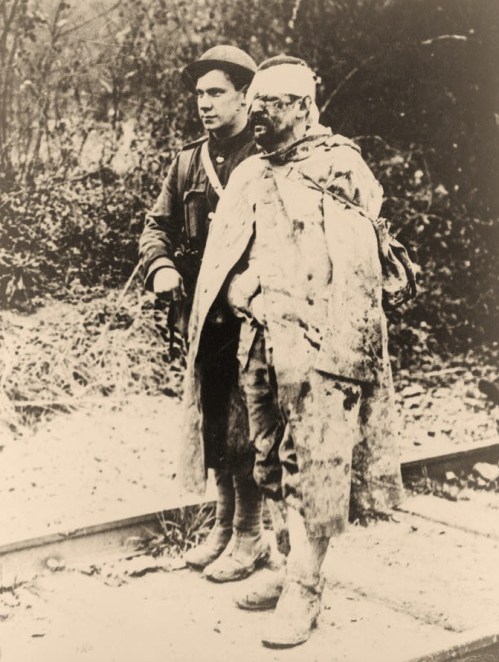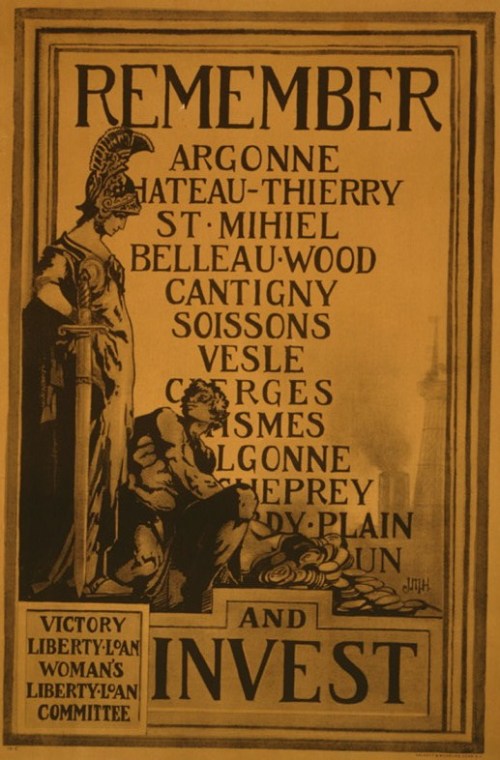
Poster showing a figure presenting a sack of large coins to a helmeted female figure bearing a sword.
The population of the United States has changed so much due to immigration that, in a nation of some 315,000,000 people, the number of descended from Revolutionary War Veterans probably now numbers in the hundreds, from the Civil war in the thousands, from the First World War in the tens of thousands and from the Second World War in the millions. The cynic might imagine that this means that the first three wars listed are ceasing to be a marketable commodity but what it really means is that they have totally left living memory in the first two cases and are rapidly fading in the latter two cases. This may increase objectivity at a the grand level of geopolitics and military strategy but it desensitizes us to the human realities of the conflicts – the real lessons learned not to make us clever for the next time but wise for all time.
As the grandson of a World War One veteran and the son of a World War II veteran I know something of the immediacy of the lessons they tried to impart. As the great great grandson of a Civil War veteran I know that even staring at a hollow where 5,000 men were slaughtered in one bloody afternoon can not impart the knowledge that a living witness does. And it is not that all of the lessons are about the battlefield – these men were sons and brothers and some of them fathers before they ever went to war and wished to be those things again when they came home.
From what I know from my own experience Nelson has done a fine job. In both the 1920 and 1930 census the American War of 1917-18 was listed simply as the World War. The horror of the battlefield, the survivors who had been gassed and maimed and may have envied the dead could not, especially in the United States where the belief in progress and a better tomorrow was still strong, believe that another war could come on such a scale – not without annihilating mankind. Nelson has captured that and even though the last living World War I veteran did not pass away until 2011 from 1941 on they had all been wraiths trying to tell us something that escaped our hearing.
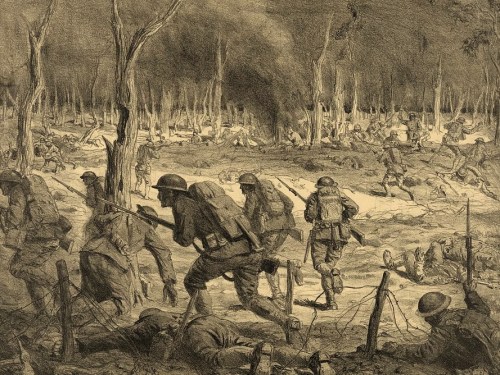
Haunted by an ancestor’s tale of near death on a distant battlefield, James Carl Nelson set out in pursuit of the scraps of memory of his grandfather’s small infantry unit. Years of travel across the world led to the retrieval of unpublished personal papers, obscure memoirs, and communications from numerous Doughboys as well as original interviews of the descendents of his grandfather’s comrades in arms. The result is a compelling tale of battle rooted in new primary sources, and one man’s search for his grandfather’s legacy in a horrifying maelstrom that is today poorly understood and nearly forgotten.
The Remains of Company D follows the members of Company D, 28th Infantry Regiment, United States First Division, from enlistment to combat to the effort to recover their remains, focusing on the three major battles at Cantigny, Soissons, and in the Meuse-Argonne and the effect these horrific battles had on the men. This is an important and powerful tale of the different destinies, personalities, and motivations of the men in Company D and a timeless portrayal of men at war.
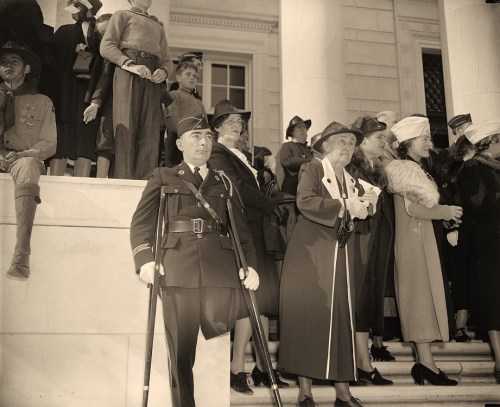
Washington, D.C., Nov. 11. A contrast in emotion is this picture made while the President paid tribute today to America’s Unknown Soldier at Arlington Cemetery. While Alex Stern, World War veteran who lost a leg in the battle of Meuse-Argonne, remembers, Mrs. Rosa M. Cawood, war mother, endeavors to snap a picture of the President.

